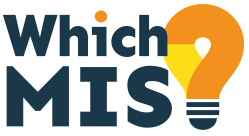With the UK General Election less than two weeks away, and the 2024 Labour manifesto promising to create 3,000 new school-based nurseries, we started to wonder whether the UK’s existing school MIS platforms are suitable, or will schools need a dedicated system designed for nurseries?
The Management Information Systems (MIS) used in UK schools and those used by UK nurseries have several differences, primarily due to the distinct needs and operational requirements of these educational organisations.
For simplicity, we list the key differences in bullet points below:
Purpose and Focus:
UK school MIS:
- Designed to manage a wide range of academic and administrative functions.
- Focus on student performance, attendance, scheduling, curriculum management, examination results, and communication with parents.
- Includes modules for staff management, financial management, and resource allocation.
UK nursery MIS:
- Tailored to manage early years education and care.
- Focus on child development tracking, daily activity logs, attendance, and parent communication.
- Emphasise safety, wellbeing, and the developmental milestones of pre-school children.
Features and Functionality:
UK school MIS:
- Complex scheduling systems for classes, exams, and events.
- Detailed academic reporting and analytics.
- API-based integration with a wide range of 3rd party ‘bolt-ons’
- Tools for managing extra-curricular activities and clubs.
- Advanced data analysis for academic performance and progress tracking for single and multiple school organisations (MATs & Federations).
UK nursery MIS:
- Simple and intuitive interfaces for caregivers and staff.
- Daily reports on meals, naps, nappy changes and activities.
- Features for recording and tracking developmental milestones.
- Tools for managing nursery-specific regulatory compliance.
- Enhanced parent communication features, such as daily updates and photo sharing.
Regulatory Compliance:
UK school MIS:
- Must comply with educational standards and regulations set by bodies like Ofsted and the Department for Education (DfE).
- Data handling and reporting requirements are more complex due to the larger age range and academic focus.
UK nursery MIS:
- Must comply with Early Years Foundation Stage (EYFS) standards and Ofsted requirements.
- Emphasis on safeguarding, health and safety regulations, and child welfare documentation.
User Interface and Usability:
UK school MIS:
- Interfaces designed for use by a range of users, including teachers, administrators, and IT staff.
- Often more complex due to the variety of features and data being managed.
UK nursery MIS:
- Interfaces designed to be user-friendly for nursery staff, who may not be as tech-savvy.
- Focus on simplicity and ease of use for quick data entry and retrieval.
Parental Engagement:
UK school MIS:
- Tools for sharing academic progress, attendance records, and school announcements with parents.
- Portals for parents to access student information and communicate with teachers.
UK nursery MIS:
- Emphasis on daily communication with parents, including real-time updates on their child’s activities.
- Features like photo sharing, daily reports, and easy messaging to ensure parents are continuously informed about their child’s day.
Scale and Scope:
UK school MIS:
- Designed to handle larger student populations and more complex organisational structures.
- Supports multiple school sites or schools within a MAT or Federation.
UK nursery MIS:
- Designed for smaller groups of children.
- Focus on the individual care and development of each child.
Data Security and Privacy:
Both MIS types:
- Must adhere to GDPR regulations for data protection.
- Security features tailored to the sensitivity of the data being handled.
Key differences:
- School MIS systems may have more robust security measures due to the broader scope of data and larger user base.
- Nursery MIS systems focus on protecting sensitive information about young children and their families.

